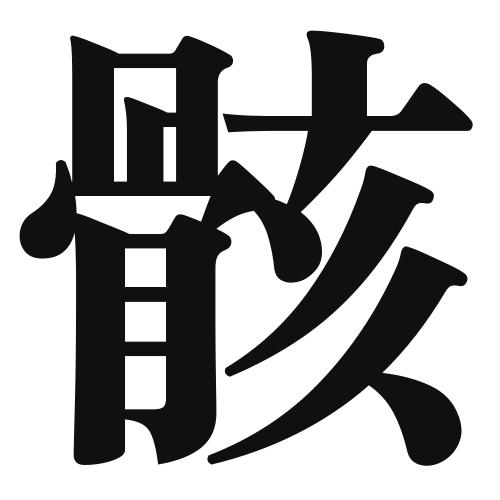1. Overview of Meaning
The kanji “骸” (gai) primarily means “skeleton” or “remains.” It refers to the bones of a deceased person or animal, often symbolizing death or the physical remnants of life.
2. Formation and Radical
Formation of the Kanji: The kanji “骸” is a phonetic compound (形声文字) that combines the radical for “horse” (馬) with a phonetic component that suggests its pronunciation. This reflects its association with the skeletal remains of animals.
Radical: The radical of “骸” is “horse” (馬), indicating a connection to animals, which is fitting given its meaning related to remains.
3. Examples of Usage
Common Words and Phrases:
- 骸骨 (gaikotsu) – skeleton
- 骸 (gai) – remains
Example Sentences in Daily Conversation:
- 彼の骸は森の中で見つかった。 (Kare no gai wa mori no naka de mitsukatta.) – His remains were found in the forest.
- 骸骨は古代の文化を知る手がかりです。 (Gaikotsu wa kodai no bunka o shiru tegakari desu.) – Skeletons are clues to understanding ancient cultures.
4. Synonyms and Antonyms
Similar Kanji:
- 遺体 (itai) – corpse; refers specifically to a dead body, emphasizing the human aspect.
- 死体 (shitai) – dead body; a more general term for any deceased body.
Antonyms:
- 生 (sei) – life; represents the opposite of remains, emphasizing vitality and existence.
5. Cultural and Historical Background
Connection to Japanese Culture: In Japanese culture, the concept of “骸” is often associated with respect for the dead and the belief in the afterlife. It reflects the importance of honoring ancestors and the deceased.
Proverbs and Idioms:
- 骸を持つ者は生を知る (Gai o motsu mono wa sei o shiru) – Those who possess remains understand life; this proverb emphasizes the connection between life and death.
